Contacts
Filter by:
Jiayuan He
Research Assistant Professor
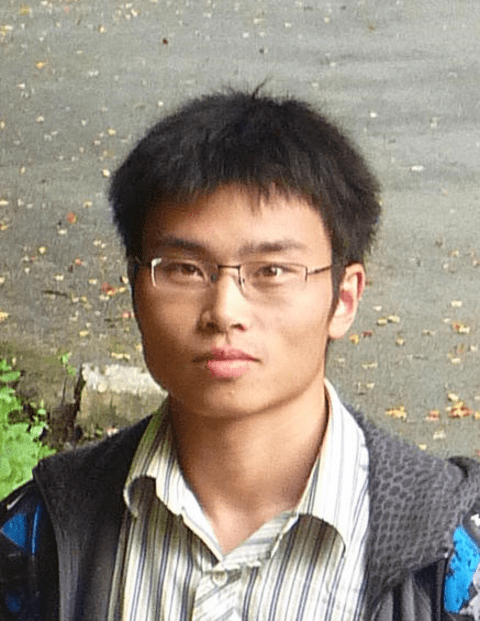
Education
- Bachelor of Mechanical Engineering, Nanjing University of Astronautics and Aeronautics, Nanjing, China, 2010
- Master of Mechanical Engineering, Shanghai Jiao Tong University, Shanghai, China, 2012
- Ph.D. in Mechanical Engineering, Shanghai Jiao Tong University, Shanghai, China, 2016
Research Interests
As the head of Myocontrol at the Waterloo Engineering Bionics Lab, his research interests include EMG and ECG signal processing, and adaptive prosthesis control strategies. He is currently serving as a postdoctoral fellow at the University of Waterloo.
Nargess Heydari Beni
PhD Candidate
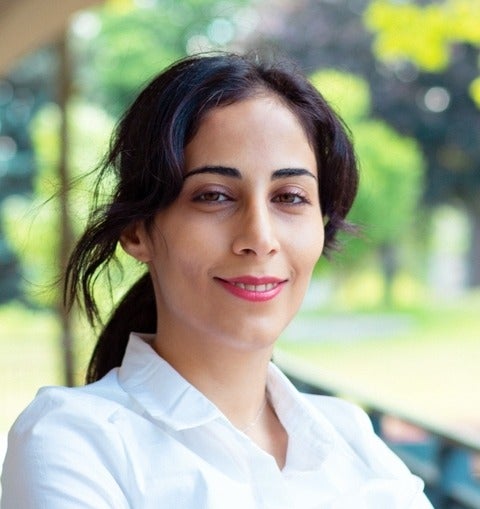
Education
- Master of Biomedical Engineering, Iran University of Science and Technology, Iran, Class of 2016
- Bachelor of Electrical Engineering, Isfahan University of Technology, Iran, Class of 2013
Research Interests
I am currently a Ph.D. Candidate in the Systems Design Engineering Department at the University of Waterloo, supervised by Dr. Ning Jiang. I am passionate about signal processing and designing biomedical systems, especially in the field of mobile Electrocardiogram (ECG), neuro-rehabilitation, and Brain-Computer Interface (BCI). The projects I have been involved in include:
Academic:
- steady-state visually evoked potentials (SSVEP) classification using Neural Networks
- Alzheimer’s detection from MRI images using Neural Networks
Research Experience:
- Rat Navigation using Brain Micro-electrical Stimulation
- Continuous Decoding of Rat Forelimb Force from Local Field Potentials (LFPs).
- Designing and Building an electrical wheelchair controlled by Electrooculogram (EOG) signals for spinal cord injured
- Micro-mouse Design
My Current project is Recording Clinical-grade ECG from the Upper-Arm.
If you are interested to have a talk about any of these projects, send me an email!
Ning Jiang
Director of Waterloo Engineering Bionics Lab, Associate Professor
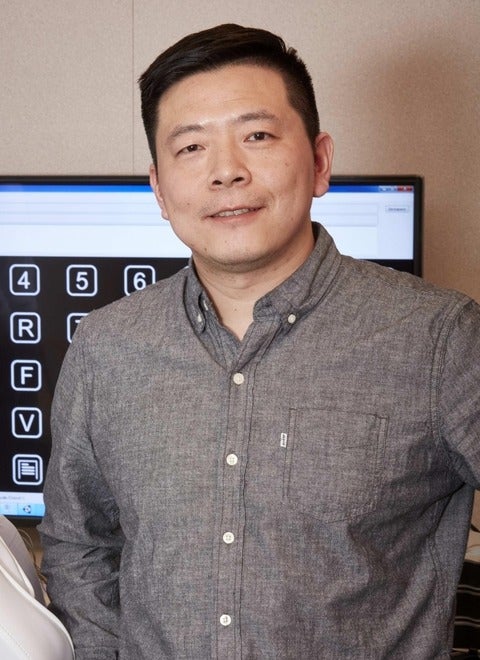
Education
- B.E. Xi’an Jiaotong University, Xi’an, China, 1998
- M.Sc. University of New Brunswick, Fredericton, NB, Canada, 2004
- Ph.D. University of New Brunswick, Fredericton, NB, Canada, 2009
Research Interests
My main research interests is biological signal processing, such as Electroencephalogram (EEG) and Elecromyography (EMG). The purpose of processing these signals is to extract the movement intentions of human, and use these intentions to interact with external environment, such as computers, robotic devices, or even other humans. Currently, the emphasis of my research is on using the above signal analysis and processing tools for applications in neurorehabilitation engineering, through intelligent human-machine interfaces (HMI), including brain-computer interface (BCI), and muscle-man-interface (MMI). Specific applications that I am working on include upper limb prosthetic control (for amputees) and rehabilitation of motor functions for patients suffered stroke. I am also interested in the broader application areas as more general human machine interfaces in fields such as neural plasticity (cortical and peripheral), ergonomics, intelligent manufacturing systems and other related topics.
Advanced prosthetic control with Electromyography (EMG)
In recent years, there have been several media coverages on advanced multi-function upper limb prostheses, often hyped as ‘the thought-control artificial hands’ or ‘mind-control robotic hands’. Advanced mechatronics design, signal processing of the electromyogram (EMG) signal and innovative surgical procedures, such as the targeted muscle and sensory reinnervation (TMR and TSR), have been the driving forces behind these achievements. Nonetheless, despite the (somewhat misled) public enthusiasm of these latest artificial devices, there still exist significant challenges and obstacles these celebrated technical achievements in the media can bring real benefit to the general amputee population. There are several sophisticated multi-function prosthetic hand in the market, but almost all them can be controlled with decades-old EMG algorithm. Currently in the research community, there has been a new direction of research on dexterous myoelectric control mimicking the neuromuscular system by extracting nature control information from surface EMG with advanced algorithm, and I am one of world leading experts in this exciting direction. The aim of my research in this direction is to develop algorithms and control strategies that would offer amputees a nature and intuitive control of these sophisticated prostheses that will provide them with unparalleled autonomy and quality of life.
Real time Close-loop Brain Computer Interface for stroke rehabilitation
For the past several decades, Brain Computer Interfaces (BCIs) system has been developed for applications such as communications (e.g. virtual keyboard or wheelchair control) for highly disabled individuals, to replace their lost motor functions. However, despite of high expectations from the public, the practical social and economic impact of BCI has been extremely limited, at any at all. This is meanly due to the fact that the current systems can be beneficial only for an extremely small portion of population, e.g. locked-in patients. In my research on BCI, I took a different approach. My vision is to use BCI as a tool for rehabilitation of impaired motor function(s), not merely as replacement of lost motor function(s). To rehabilitate or restore impaired motor functions implies inducing neuroplasticity, or rewiring the nervous system, which is a very challenging tasks, and very few studies has demonstrated such a capability from a BCI system. The BCI system we proposed, however, has done just that. Our system explicitly exploited the Hebbian principle of associativity, which one of the underlying principles of neural plasticity. This new BCI system has the potential to be the technical basis of a patient-centric and patient-driven neurorehabilitation paradigm for stroke patients. Such a paradigm will be more cost-efficient and have better patient compliances than the current therapist-centric approach in clinical practice. We have developed series of algorithms for electroencephalogram (EEG) that can detect the intention of movement with latency of less than 500 ms. We also demonstrated that such a low-latency is the key factor in efficiently inducing cortical plasticity peripheral electrical stimulation (ES) is trigged by the BCI. With our system, only 30 BCI-driven ES, significant neurophysiological change, thus neural plasticity, was observed in healthy subjects, as well as a cohort of chronic stroke patients with motor deficiencies. Our work on this topic has won three consecutive BCI Award Global Top 10 nominations (2012, 2013, and 2014), the only group in the world to achieve this.
Fatemeh Karimi
Phd Candidate
Education
- Bachelor of Electrical Engineering, Shahid Bahonar University of Kerman, Kerman, Iran, 2009
- Master of Electrical Engineering, Shahid Bahonar University of Kerman, Kerman, Iran, 2013
Research Interests
I am currently a Ph.D. student in the Systems Design Engineering Department at the University of Waterloo, supervised by Ning Jiang and Jonathan Kofman. My research interests are in the areas of biomedical signal processing, brain-computer interfaces (BCI), and neurorehabilitation systems.
Bharath Krishnan
Masters of applied Science Candidate

Research Interests: I am pursuing a Master's degree in the Department of Systems Design Engineering. My research interests lie in the fields of machine learning and biomedical signal processing. My research is currently geared towards combining both Ultrasound and EMG modalities in an effort to assess muscular fatigue for rehabilitation purposes.
Jiansheng Niu
Master of Applied Science Candidate

Education:
Bachelor of Electrical and Electronic Engineering, University of Nottingham, UK, 2018
Research Interests:
I am pursuing a Master’s degree in the Department of Systems Design Engineering under Dr. Ning Jiang’s supervision. My research interests are in the areas of Brain-Computer Interface (BCI) system design, EEG signal processing, and applied machine learning pattern recognition. My current project is movement intention decoding, which could benefit motor-impaired patients’ rehabilitation in the long term.
Ashirbad Pradhan
PhD Student
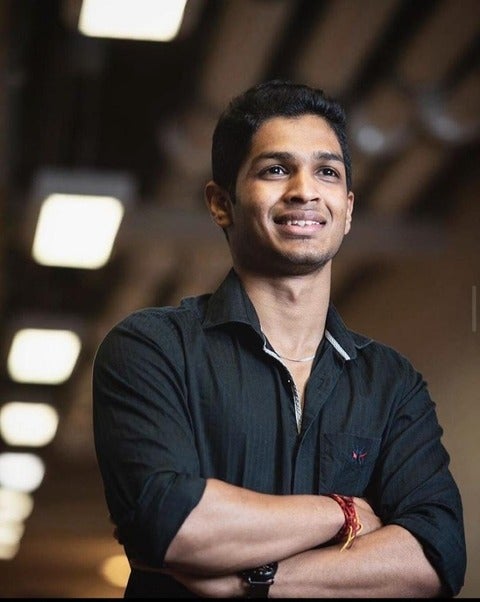
Education:
Bachelor of Technology in Biomedical Engineering, National Institute of Technology Rourkela, India, 2016
Master of Science in Kinesiology, University of New Brunswick, Canada, 2018
Research Interests:
My research focuses on biomedical signal processing and myoelectric control of the prosthetic arm. My research interests include pattern recognition in real-time applications, device development, UI development, and biomechanics.
Aravind Ravi
PhD Student

Education:
Master of Applied Science in Systems Design Engineering, University of Waterloo, Canada, 2019
Bachelor of Engineering in Electronics and Communication, PESIT Bangalore South Campus, VTU, India, 2016
Research Interests:
I am a Ph.D. student in Systems Design Engineering working under the supervision of Dr. Ning Jiang. My research interests are in applied machine learning, biosignal analysis, and neural engineering and rehabilitation. I am currently working on studying and developing novel decoding methods for EEG-based visual BCIs directed towards the measurement and induction of motor neural plasticity. Specifically, I am interested in augmenting paradigms such as action observation and motor imagery BCIs. I have also worked on channel selection methods, convolution neural networks (CNN) and novel stimulus designs for enhancing the performance of steady-state visual evoked potentials (SSVEP) based BCIs. Outside the lab, I enjoy playing the keyboard, composing music, cooking, and reading about spirituality.
Other Experience:
Biosignal Research Engineer at Muse by Interaxon working on developing automated sleep staging algorithms and machine learning for biosignal analysis (EEG, PPG). Software developer at Wipro technologies working on 5G and network analytics.
Kevin Chan
Past Member (Bachelor of Science, Co-op)
Project Title: Ultra-sound device for prosthetic control
Present Position: Undergraduate student at the University of Waterloo
Tushar Chopra
Past Member (Masters of applied Science)

Passion for Machine Learning and Human-Machine Interfacing lead to the University of Waterloo. Here I’m doing my Masters under the supervision of Prof. Ning Jiang. My thesis research titled “Ultra-Low Latency In Gaming Through Real-Time Non-Linear EMG Onset Detection and Machine Learning” focuses on reducing gamer’s mouse click reaction delay. This gives a tactical advantage to gamers by giving them lead up to 80ms. See the video of the same here.
Yuanpei Gao
Past Member (Researcher)

Project Title:
Comparison study of SSVEP and SSMVEP (BCI)
Research Interest:
I am a Mechatronics Engineering undergrad at University of Waterloo. I am interested in many different directions in BCI researches (because I’m still trying to see which ones I want to research most in my further study), and currently I am reading books about affective computing and machine learning (collaborative BCI and DBS on my list!). I love to use mathematics and programming to solve challenges!
Kawtar Ghiatt
Past Member (Researcher)

-
Signal processing
-
Machine learning
-
Biomedical
-
Prosthesis
Manas Joshi
Past Member (Bachelor of Science, Co-op)
Project Title: Hardware and firmware development of a bi-manual sEMG gaming system
Current Position: Undergraduate student at the University of Waterloo
Benjamin Lambert
Past Member (Masters of applied Science)

Previous Position: Exchange Graduate Student at Shanghai Jiao tong University
Jan Lau
Past Member (Undergraduate Co-op)

Education
- Candidate for Bachelor of Biomedical Engineering, University of Waterloo, Waterloo, Canada
Research Interests:
I am a Biomedical Engineering student at the University of Waterloo who is interested in prosthetics. I am designing a protottype for an exoskeleton that helps Parkinson's patients recover from freeze-of-gait (FOG) episodes. Outside the classroom, I live an active and musical life and have a never-ending search for knowledge.
Janice Lau
Past Member (Bachelor of Science, Co-op)
Project Title: Low and medium fidelity prototyping of a bilateral lower-limb exoskeleton for Parkinson patients with Freeze of Gait.
Current Position: Undergraduate student at the University of Waterloo
Sean Lazaro
Past Member (Bachelor of Science, Co-op)
Project Title: Mobile ECG acquisition
Present Position: Undergraduate student at the University of Waterloo
Jason Leung
Past Member (Bachelor of Science, Co-op)
Project Title: Signal processing for a portable Brain-Computer interfacing
Present Position: Undergraduate student at the University of Waterloo
Chengyao Li
Past Member (Bachelor of Science, Co-op)
Project Title: Programming framework for real-time Brain-Computer interface
Present Position: Graduate student at Stanford
Mei Lin Chen
Past Member (Masters of applied Science)

Education
- Bachelor of Honours Health Sciences, McMaster University, Hamilton, Canada, 2016
Research Interests
I am a masters student in Systems Design Engineering at the University of Waterloo. My research areas are brain-computer interfaces, neurorehabilitation, and neuropathic pain management. I am passionate about solving challenging issues in clinical medicine through innovations in health technology. In my free time, I am also a classical singer/performer for special events.
Erik Lloyd
Past Member (Masters of applied Science)
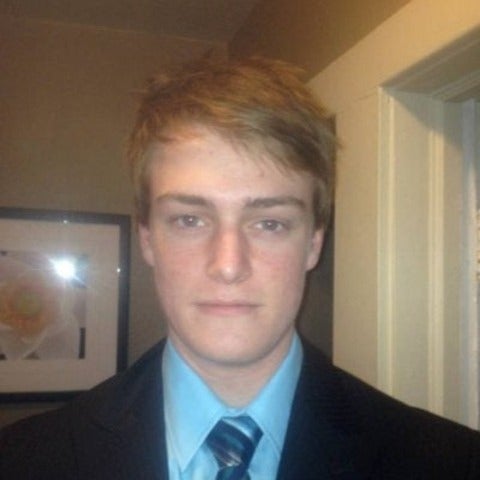
Education
- Bachelor of Technology, McMaster University, Hamilton, Canada, 2017
Research Interests
I am working to improve the dexterity of upper limb prosthetics through applications of deep learning. The focus is on improving hand dexterity, by allowing the user to naturally control individual fingers in a prosthesis, in stead of selecting grip patterns.
I am also running Brink Bionics Inc, a start-up that was born from work to develop better upper limb prosthetic technology in the Engineering Bionics Lab. Our technology is designed to be both more affordable, and more capable than the best available prosthetic arms.
Bahareh Tolooshams
Past Member (Bachelor of Science, Co-op)
Project Title: Force invariant EMG preprocessing for robust myoelectric control
Present Position: Graduate student at the Harvard/MIT University
Aleksandar Malinovic
Past Member (Masters of applied Science)

Education
- Bachelor of Electrical Engineering, University of Belgrade, Belgrade, Serbia, 2005
- Master of Electrical Engineering, University of Belgrade, Belgrade, Serbia, 2006
Research Interests
My name is Aleksandar, and I am a computer engineer. My professional summary could be described as a seasoned information technologies professional with 10 years of international experience building business applications in financial and pharmaceutical industries, as well as for the public sector. I have achieved significant accomplishments in developing software packages utilizing the FIX protocol, and mastered a wide array of regulations applied to registration of medications through collaboration with over 20 countries. I am also interested in helping customers achieve their business and functional objectives by utilizing the latest technologies and methodologies in application integration segment. Currently, I am currently a Masters student in the System Design Engineering at University of Waterloo, supervised by Ning Jiang and Helen Chen. My research interests are in compressing biomedical signals, and secure encoding medical data.
Jacob Manuel
Past Member (Masters of applied Science)
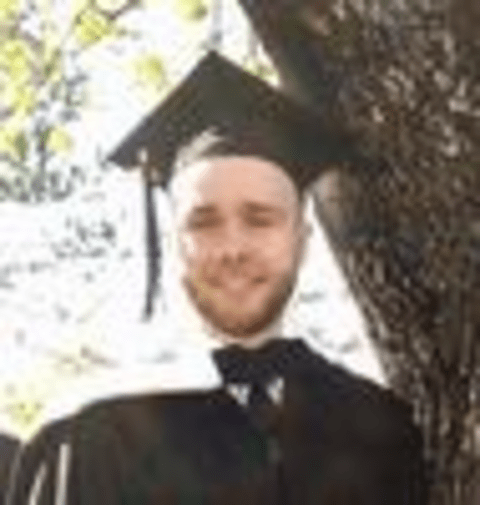
- Education:
Bachelor of Science in Software Engineering , University of New Brunswick, Fredericton, NB, Canada, 2018
- Research Interests:
“I am a Masters student in Systems Design Engineering at the University of Waterloo. My research interests are in the areas of signal processing, neurorehabilitation, software engineering, and human factors. The goal of my research is to establish techniques for developing brain-computer interfaces for use post-stroke rehabilitation. ”
Kevin Mathew
Past Member (Bachelor of Science, Co-op)
Project Title: Surface EMG and torque relationship
Current Position: Undergraduate student at the University of Waterloo
Sarah Pearce
Past Member (Masters of applied Science Candidate)
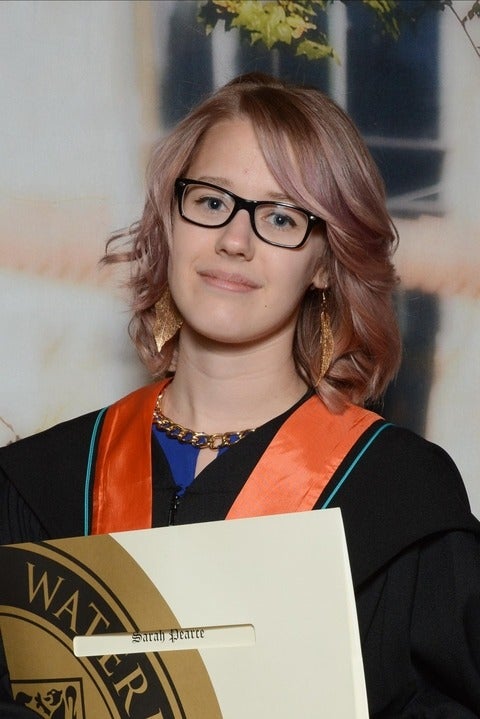
Education
- Bachelor of Knowledge Integration, University of Waterloo, Waterloo, Canada, 2016
Research Interests
I am a Masters student in Systems Design Engineering at the University of Waterloo. My specializations are in collaborative design and computer science, but I also have interests in wearable technology, user experience design (UX), and software engineering. My research in brain-computer interfaces (BCI) integrates human factors engineering with signal processing. My current work is investigating using BCI as an alternative/supplementary treatment to those afflicted with ASD.
Lin Yao
Past Member(Post Doctoral Researcher)
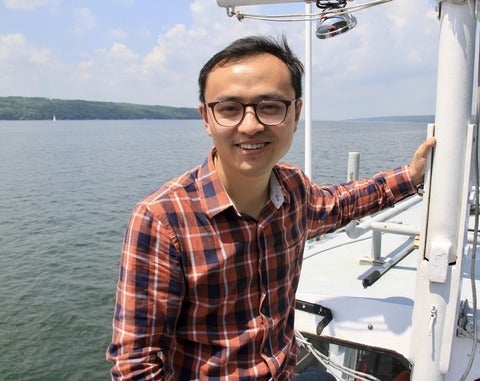
Present Position: Post doctoral researcher at the Cornell University
Lin Yao received the Bachelor’s degree in mechanical design, manufacturing and automation from Sichuan University, Sichuan, China, in 2009, the Master’s and Ph.D. degrees in mechanical engineering from Shanghai Jiao Tong University, Shanghai, China, in 2015.
Dr. Yao was a Research Scientist with the Institute of Neurorehabilitation Systems, University Medical Center Göttingen, Georg-August University, Göttingen, Germany, within the Bernstein Center for Computational Neuroscience from Apr. 2015 to Aug. 2016. There, he was the Head of the Brain-computer Interface Laboratory. From Sep. 2016 to Feb. 2018, he was a Postdoctoral Researcher at the Department of Systems Design Engineering, University of Waterloo, Waterloo, Canada. He is currently a Postdoctoral Associate at School of Electrical and Computer Engineering, Cornell University, Ithaca, NY, USA. His research interests include biomedical signal processing, BCI for neurorehabilitation, computational neuroscience, and machine learning.
Xin Zhang
Past Member (PhD Candidate, International Visiting Graduate Student)
Education
- Bachelor of Mechanical Engineering, Xi’an Jiao tong University, Xi’an, China, 2012
- Master of Mechanical Engineering, Xi’an Jiao tong University, Xi’an, China,2015
- Ph.D. in Mechanical Engineering, Xi’an Jiao tong University, Xi’an, China
Research Interests
I’m Xin Zhang, an International visiting graduate student at University of Waterloo. I came from Xi’an, China. My research is mainly focused on SSVEP and rehabilitation. I explore the brain response to the modulation in SSVEP paradigms and design some motion paradigms to explore the influence on the motor area in brain. We also built an close-loop brain controlled rehabilitation training system for post stroke patients.